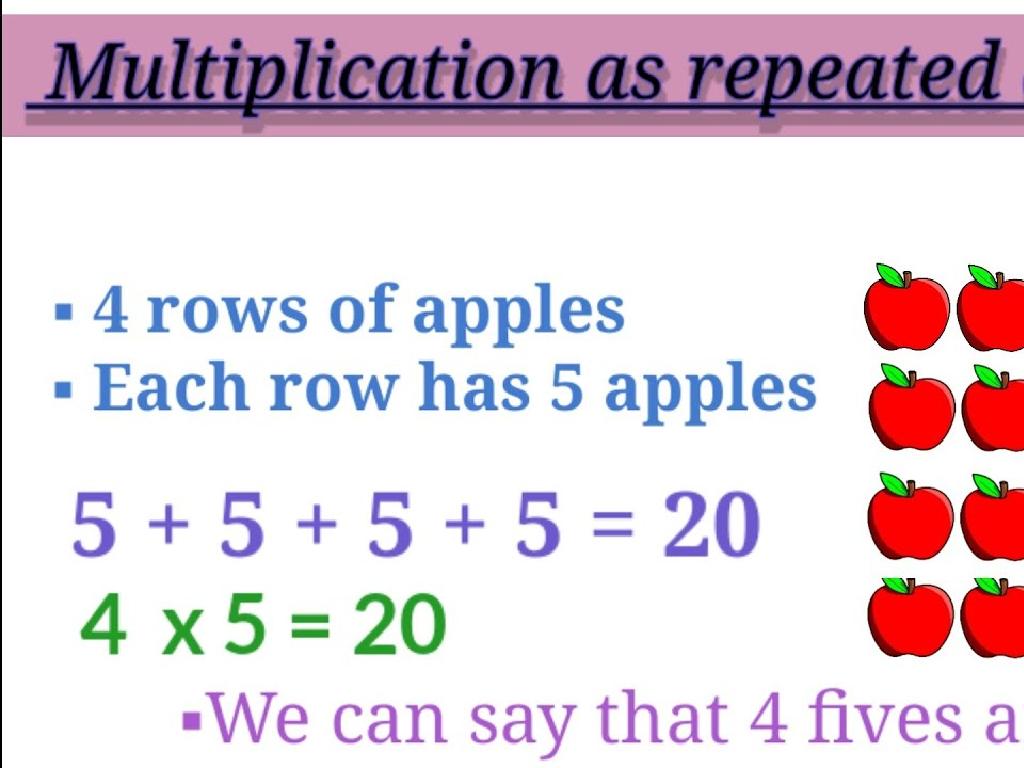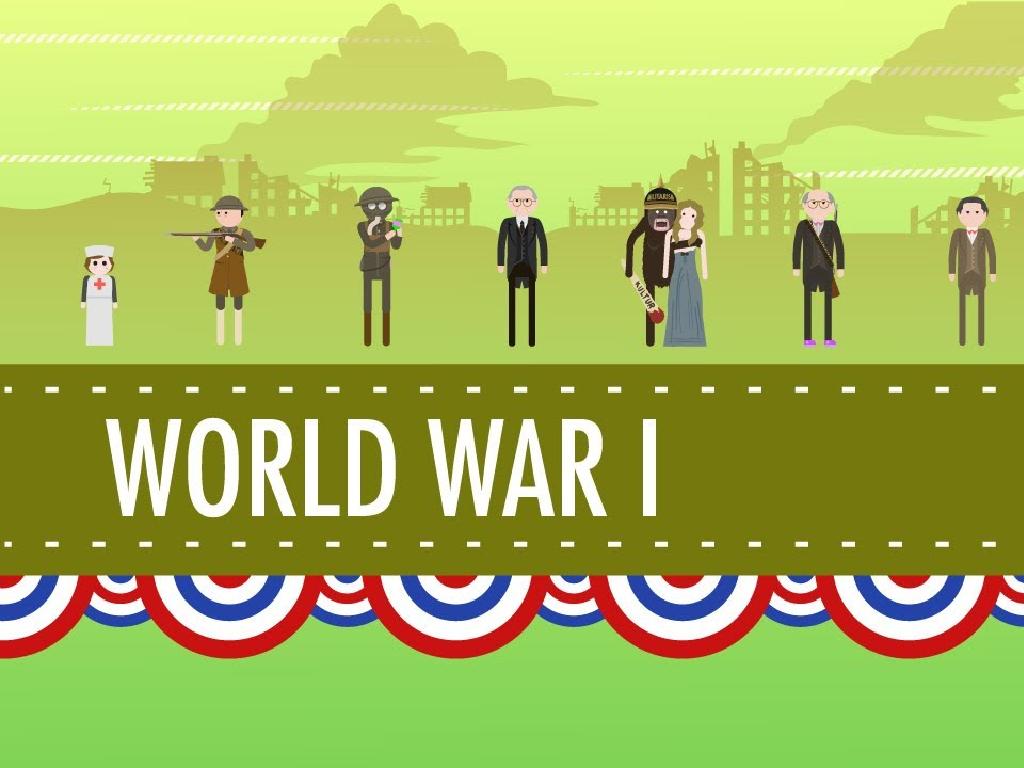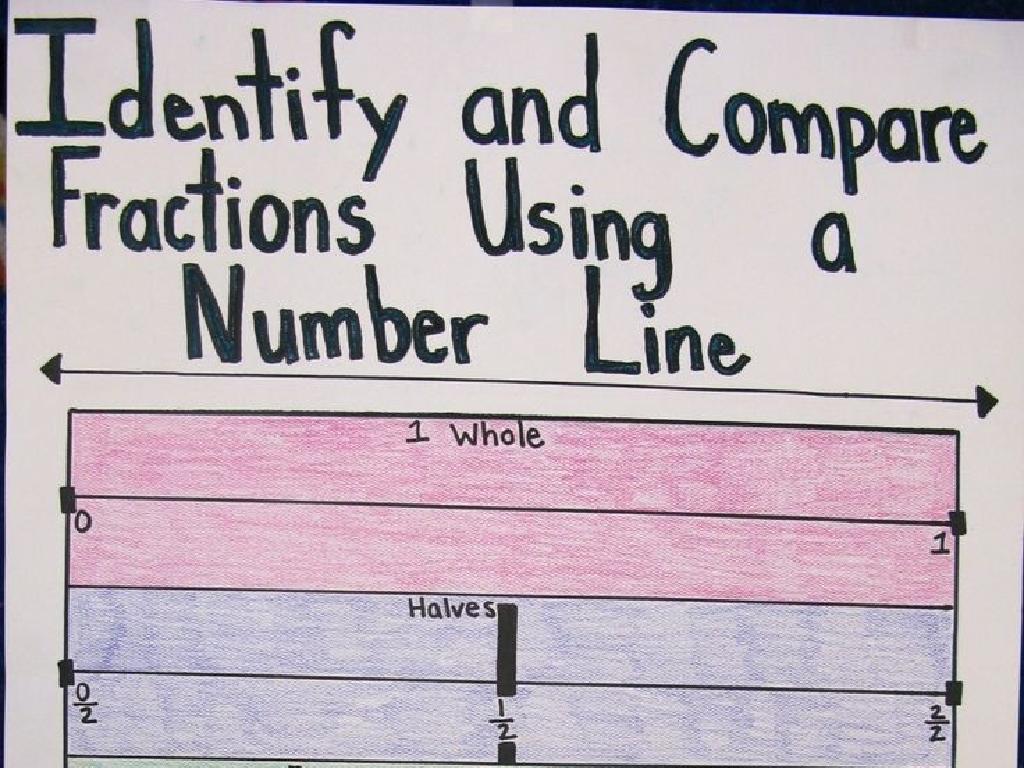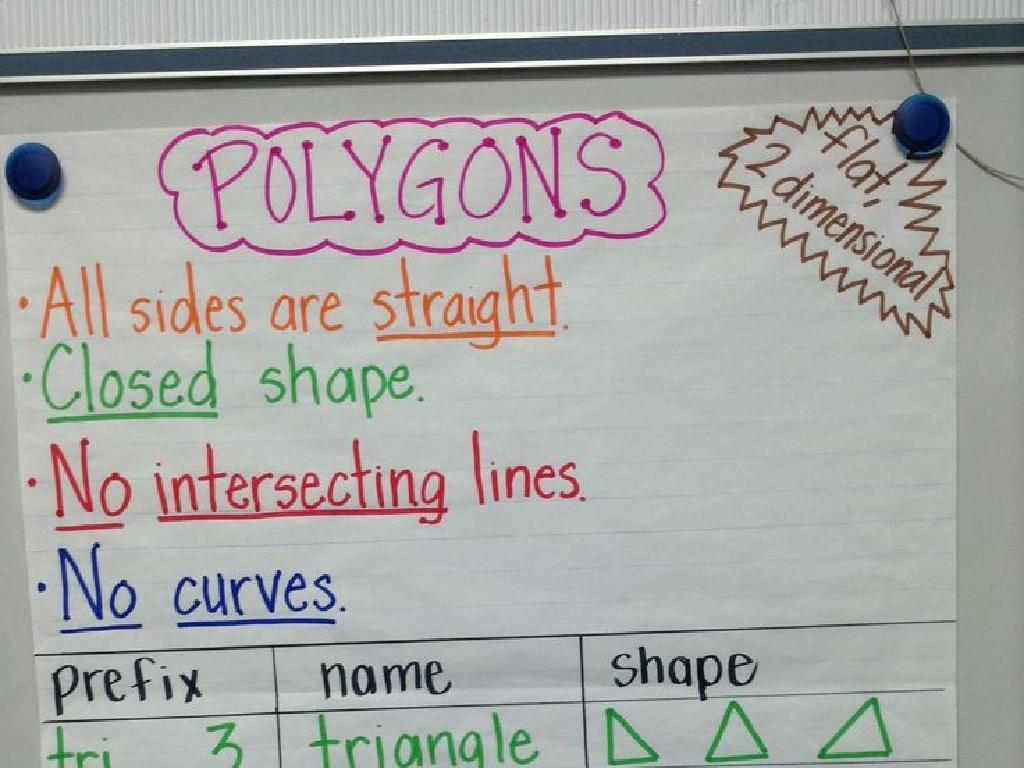Interpret Food Webs Ii
Subject: Science
Grade: Eighth grade
Topic: Ecological Interactions
Please LOG IN to download the presentation. Access is available to registered users only.
View More Content
Interpreting Food Webs II: Ecological Interactions
– Ecology’s role in understanding nature
– Ecology helps us see how organisms relate to each other and their environment.
– Overview of ecological interactions
– Interactions include predation, competition, and symbiosis.
– Deep dive into food webs
– Food webs show how energy moves through an ecosystem via feeding relationships.
– Analyzing energy flow in ecosystems
– We’ll explore how energy is transferred from producers to apex predators.
|
This slide introduces the concept of ecological interactions with a focus on interpreting food webs, an essential part of understanding how energy flows through an ecosystem. Start by explaining the role of ecology in studying the relationships between organisms and their environment. Discuss different types of interactions such as predation, where one organism eats another; competition, where organisms vie for the same resources; and symbiosis, where different species live closely together, often benefiting one another. Emphasize the complexity of food webs, which illustrate the numerous feeding connections in an ecosystem, and explain how they differ from simpler food chains. Encourage students to think critically about how energy is transferred from one trophic level to the next, and the importance of each organism within a food web.
Recap: Food Chains and Food Webs
– Define a Food Chain
– A sequence of organisms where each is food for the next
– Food Webs vs. Food Chains
– Food webs show complex networks of feeding relations
– Examples of Food Chains in a Web
– Grass Rabbit Fox
– Analyzing a Food Web
– How energy flows through an ecosystem
|
This slide aims to recap the basic concepts of food chains and food webs, highlighting the differences between them. A food chain is a linear sequence of organisms where each is food for the next, showing a direct flow of energy. In contrast, food webs illustrate how these chains interconnect, forming a complex network of feeding relationships within an ecosystem. Provide examples of simple food chains that exist within a larger food web to help students visualize the concept. Discuss how analyzing food webs can give us a better understanding of the balance and energy flow in an ecosystem. Encourage students to think about the implications of changes within a food web, such as the removal of a species, and how that might affect the entire system.
Components of a Food Web
– Producers: Web’s foundation
– Plants and algae make their own food using sunlight.
– Consumers: Various feeding types
– Herbivores eat plants, carnivores eat meat, and omnivores eat both.
– Decomposers: Ecosystem recyclers
– Organisms like fungi and bacteria break down dead matter.
– Interdependence in food webs
|
This slide introduces the basic components of a food web, emphasizing the roles of producers, consumers, and decomposers in an ecosystem. Producers, such as plants and algae, are the foundation because they create energy through photosynthesis. Consumers are categorized based on their diet: herbivores eat plants, carnivores eat other animals, and omnivores consume a mix of both. Decomposers play a crucial role by breaking down dead organisms, returning nutrients to the soil, and maintaining the balance of the ecosystem. Highlight the interdependence of these components and how energy flows from one to another, creating a complex web of life. Encourage students to think of examples within each category and how they might interact in a local food web.
Energy Flow in Food Webs
– Explaining Trophic Levels
– Producers to top predators: levels of who eats whom
– Energy Movement in Ecosystems
– Sunlight to producers, then transferred up the levels
– The 10% Energy Transfer Rule
– Only about 10% of energy is passed on to the next level
– Implications for Food Webs
– Understanding energy flow is crucial for ecosystem management
|
This slide introduces the concept of energy flow within food webs, focusing on the structure of trophic levels and how energy is transferred in an ecosystem. Start by explaining the hierarchy of trophic levels, from producers at the base to apex predators at the top. Discuss how energy originates from the sun and is utilized by producers (plants), which are then consumed by primary consumers, and so on up the food chain. Emphasize the 10% Rule, which states that only about 10% of the energy from one trophic level is transferred to the next, with the rest lost as heat. Highlight the importance of this concept in understanding the balance and health of ecosystems, as well as in making decisions about conservation and resource management. Encourage students to think about how this rule affects populations and interactions within a food web.
Interactions and Interdependencies in Food Webs
– Explore predator-prey dynamics
– How predators and prey shape each other’s populations
– Keystone species significance
– Species that have a disproportionate effect on their environment
– Mutualism, Commensalism, and Parasitism
– Relationships where species live closely together, with varying impacts
– Balance within ecosystems
|
This slide aims to delve into the complex relationships within food webs that maintain ecological balance. Start by discussing predator-prey relationships, highlighting how predators control prey populations and vice versa, which can be exemplified by the classic wolf and rabbit scenario. Move on to the role of keystone species, such as sea otters in kelp forest ecosystems, and how their presence or absence can have a significant impact on the environment. Then, explain the symbiotic relationships: mutualism (both species benefit), commensalism (one benefits, the other is unaffected), and parasitism (one benefits at the expense of the other), using examples like bees and flowers (mutualism), barnacles on whales (commensalism), and ticks on mammals (parasitism). Conclude by emphasizing the importance of these interactions in maintaining the balance within ecosystems. Encourage students to think of additional examples and consider how these interactions affect the stability and health of ecosystems.
Analyzing a Food Web
– Identify species and their roles
– Producers, consumers, decomposers
– Trace the energy flow in the web
– Energy moves from plants up to predators
– Impact of species removal
– Removing one can affect the whole web
– Discuss ecosystem balance
– Balance is key for a healthy ecosystem
|
This slide aims to delve into the complexity of food webs within ecosystems. Start by identifying various species in a food web and categorize them as producers (plants), consumers (herbivores, carnivores), and decomposers (fungi, bacteria). Explain how energy is transferred from one trophic level to another, beginning with producers and moving up to apex predators. Highlight the consequences of removing a species, such as a keystone predator, and how it can lead to imbalances and affect the entire web. Emphasize the importance of each species in maintaining the equilibrium of the ecosystem. Engage students with examples of real food webs and encourage them to think critically about conservation efforts.
Case Study: Yellowstone’s Food Web Dynamics
– Reintroduction of wolves to Yellowstone
– Wolves were reintroduced in 1995, altering prey populations.
– Impact on food web dynamics
– Predation by wolves affected species like elk and coyotes.
– Observing the ecosystem’s ripple effect
– Changes led to vegetation regrowth and river stabilization.
– Balancing the Yellowstone ecosystem
– The return of wolves helped restore ecological balance.
|
This slide examines the case study of the reintroduction of wolves into Yellowstone National Park and its profound impact on the park’s food web and ecosystem. In 1995, wolves were brought back to the park, which led to a series of changes in the population dynamics of other species. Students should understand how the presence of a top predator like the wolf can control the population of prey species such as elk, which in turn allows vegetation to thrive. This has a cascading effect on the ecosystem, leading to the recovery of certain areas and stabilization of riverbanks due to increased plant growth. Discuss the concept of trophic cascades and how the reintroduction of a single species can have wide-reaching effects on the entire ecosystem. Encourage students to think critically about the role of predators in maintaining ecological balance.
Class Activity: Construct Your Own Food Web
– Create a food web with species cards
– Discuss each organism’s role
– Is it a producer, consumer, or decomposer?
– Predict effects of species removal
– How does one species’ absence affect the web?
– Reflect on the food web’s balance
|
This activity is designed to help students understand the complexity and interdependence of ecosystems. Provide students with species cards representing various organisms in an ecosystem. Instruct them to arrange the cards to show who eats whom, forming a food web. Facilitate a discussion on the role of each organism, categorizing them as producers, consumers, or decomposers. Then, have students predict what might happen if one species were removed from the ecosystem. This could lead to a conversation about the importance of each species and the concept of keystone species. Possible variations of the activity could include creating multiple food webs with different ecosystems or challenging students to add ‘invasive species’ to the web and predict the outcomes.
Conclusion: The Web of Life
– Review of food web concepts
– Present your food web diagrams
– Share the food webs you’ve created and explain the connections
– Discuss species’ ecosystem roles
– Each species has a unique role, like pollinators or decomposers
– Reflect on biodiversity importance
– Biodiversity ensures ecosystem resilience and health
|
As we wrap up today’s lesson on food webs, it’s important to revisit the key concepts we’ve learned. Encourage students to present the food webs they’ve created, highlighting the interdependence of species. Facilitate a discussion on the role each species plays in maintaining the balance of the ecosystem, emphasizing the importance of biodiversity. Reflecting on these topics helps students appreciate the complexity and fragility of ecosystems and understand the impact of losing species. This reflection is crucial for fostering a sense of stewardship for the environment.






